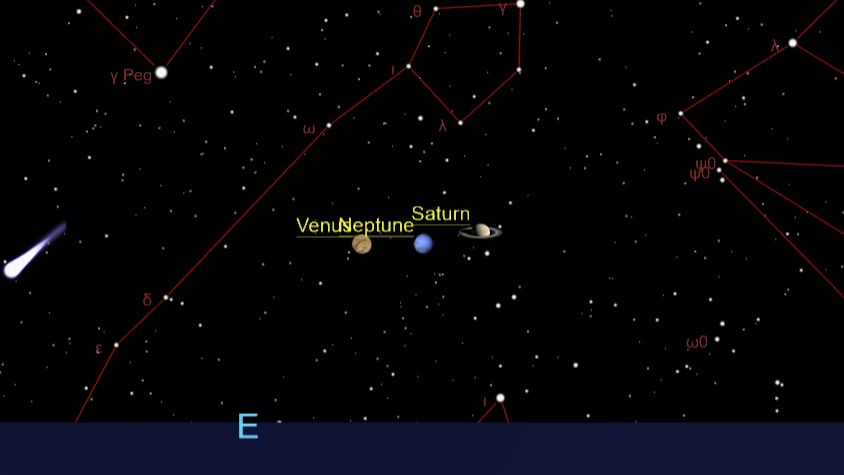ARTICLE AD BOX
WASHINGTON — The Space Force’s top military official warned lawmakers May 6 that the military’s newest service branch needs increased funding to fulfill an expanding roster of missions, even as the Pentagon faces budget constraints.
Chief of Space Operations Gen. Chance Saltzman, appearing before the House Appropriations Committee’s defense subcommittee, highlighted what he described as a concerning trend of flat budgets coupled with growing responsibilities.
“We’re being asked to accept new responsibilities and missions, forcing tough choices between delayed readiness, reduced capacity or unaddressed vulnerabilities,” Saltzman told the subcommittee.
The hearing came just days after the White House released its preliminary fiscal 2026 budget outline, which maintains overall defense spending at $892.6 billion—unchanged from fiscal 2025 levels. The administration has proposed an additional $113.3 billion defense increase, but only if Congress passes a separate $150 billion Republican-led reconciliation bill, potentially pushing total defense spending over $1 trillion.
With the Pentagon still debating the details of its 2026 budget request—and only a partial “skinny” budget outline released by the White House—none of the witnesses, including Saltzman, acting Air Force Secretary Gary Ashworth, and Air Force Chief of Staff Gen. David Allvin, could comment on program-specific funding levels.
‘Not a substitute for regular appropriations’
Defense appropriators expressed frustration with the administration’s approach. HAC-D Chairman Rep. Ken Calvert (R-Calif.) criticized the use of a reconciliation bill as a funding mechanism, saying it “should not be a substitute for regular appropriations.”
Rep. Betty McCollum (D-Minn.), the subcommittee’s ranking Democrat, echoed these concerns, noting that “appropriating defense dollars through reconciliation undermines the authority and the jurisdiction of the appropriations committee.”
For the Space Force, the current fiscal uncertainty follows a challenging 2025 budget cycle. Under the continuing resolution Congress passed for fiscal 2025, the service received $28.7 billion—$800 million below its request and $300 million less than its fiscal 2024 allocation.
Meanwhile, the service’s responsibilities continue to expand, said Saltzman. He outlined multiple new missions assigned to the Space Force in recent years, including ground and air target tracking capabilities, new space control operations, and significant increases in modeling, simulation, and an increase in launch operations.
“In the past three years, the U.S. Space Force has been asked to take on new missions, like ground and air moving target indicator, adding new space control capabilities and taking on additional responsibilities associated with modeling and simulation, force design analytics and a threefold increase in launch tempo at our national spaceports and new advanced training requirements,” he said.
The service’s newest responsibility involves the Golden Dome next-generation missile defense system, which will heavily rely on space-based sensors, interceptors, and communication capabilities.
“These represent new and emerging requirements for missions that have never been accomplished by a military space organization,” Saltzman explained. “These new mission areas will require new and stable resources over time.”
Space Force top priorities
When pressed about his top funding priorities, Saltzman identified three key areas:
First, accelerating the deployment of a proliferated constellation of satellites in low Earth orbit being procured by the Space Development Agency. “More money means I can deliver that proliferated constellation faster,” he said.
Second, enhancing “counter space” capabilities, which include defensive and offensive technologies to counter adversaries’ anti-satellite weapons. While the service has invested in the underlying technology, Saltzman noted they “haven’t built them to the capacity where they can actually hold enough targets at risk.”
Finally, Saltzman emphasized the need for improved testing and training infrastructure, including simulators and digital environments to validate equipment and tactics and train operators.
Lawmakers were especially interested in potential cost estimates for Golden Dome but none of the witnesses could provide any details.
A Congressional Budget Office report released May 5 noted that without detailed system specifications, it’s difficult to project the cost of deploying a space-based missile interceptor network. The report highlighted the complexities involved in developing such systems.
Saltzman said programs like Golden Dome highlight the strategic importance of space assets. “Space gives us an incredible strategic advantage, but any advantage can become a vulnerability when held at risk. In the future, defending the homeland will demand that we first defend the satellites that make that defense possible… If we want a space force that can secure our nation’s interests in, from and to space, we must resource it accordingly.”

 15 hours ago
7
15 hours ago
7






 English (US) ·
English (US) ·